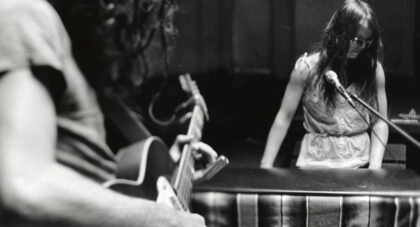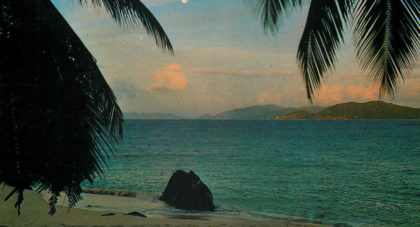Listening to Carl Stone's second compilation for the excellent archival label Unseen Worlds, it's not uncommon to find yourself completely lost in a web of sounds. It's not necessarily a disorienting feeling. Instead, it's kind of like wading into a cool pool. It's only once you're all the way in that the temperature feels right. Utilizing samplers and armed with a keen ear, Stone's pieces, like 1993's languid and majestic "Banteay Srey" and 1988's sprightly "Sonali," fall together in surprising ways; the moods and sensations shift, but the expansive feeling always remains.
Electronic Music from the Eighties and Nineties is the sequel to the 2016 compilation Music from the Seventies and Eighties, and it documents Stone's shift into more tranquil waters. Recorded between 1983-1993, right as approaches similar to Stone's avant-garde layering and sampling were being explored in the mainstream via hip-hop, the collection presents a unified vision comprised of disparate sources – Mozart melodies, flutes, a Burundi children's song – brought together in a way that draws an elegant line connecting Steve Reich's chopped and looped epics to Robert Fripp's swelling Frippertronics suites to William Basinski's The Disintegration Loops. We caught up with Stone from his home in Japan to discuss the music gathered here and his ever-evolving process.
Electronic Music from the Eighties and Nineties by Carl Stone
Aquarium Drunkard: What initially brought you out to Japan? How long have you been out there full time?
Carl Stone: Since 2001. I first came to Japan in 1984 to perform a piece. I applied for and got a grant to live in Japan for about six months from the Asian Cultural Council. That was in 88-89, and that led to a lot of subsequent opportunities. In 2001, I was over and I got headhunted by a someone at [Chukyo University] who was looking to fill a slot they had vacant. I’d never really thought about teaching before. I’d visited many times and I liked Japan, but I never thought that I’d live there. But they made me a decent offer and provided the kind of stability and I said, "Why not, let’s do it." I’ve been here ever since.
AD: How often do you get back to the states?
Carl Stones: Two or three times a year, minimum. I haven’t cut my ties. I have a lot of friends and family and I keep an apartment in Los Angeles as a sort of pied-î -terre for me when I go back.
AD: You’ve made extensive field recordings of urban spaces in Japan. Have you done similar stuff in American cities?
Carl Stone: I have some material I’ve recorded in the US that’s made it into a composition or two, but I haven’t for the most part. The Tokyo soundscape is really fascinating. It’s part of the reason I really enjoy living here. It’s a city with a lot of very characteristic sounds you can’t hear anywhere else. What’s the soundscape of New York really? If you were to take the sound of the traffic out, the whole thing would collapse. With a place like Tokyo, there’s so much more there.
Only the good shit. Aquarium Drunkard is powered by its patrons. Keep the servers humming and help us continue doing it by pledging your support.
To continue reading, become a member or log in.


